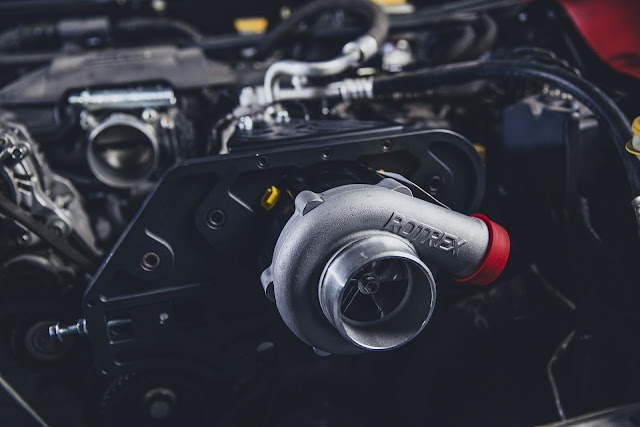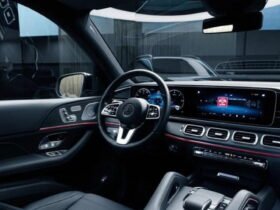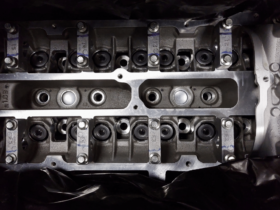A supercharger is an air compressor that increases the pressure or density of air supplied to an internal combustion engine. This gives each intake cycle of the engine more oxygen. It lets the engine burn more fuel and do more work, thus increasing power. So if more air is forced & compressed into the cylinder, there will be an increase in the mean pressure & hence will produce more power.
The power to the supercharger is provided mechanically by the means of belt(usually), gear, shaft or chain connected to the engine’s crankshaft. Supercharging is a type of forced induction as it is an external application which forces or helps engine to increase power due to external source.
Supercharging of Engine:
In Internal Combustion engine, we use supercharging to increase the volumetric efficiency. It is most commonly used in petrol engines. Where Turbochargers are designed for a range of rpm at which it works best, superchargers takes performance at next level as it is designed to run at high rpms.
 |
| Source:- Pixabay |
How supercharger increases the volumetric efficiency:
Superchargers increase intake by compressing air above atmospheric pressure, without creating a vacuum. This forces more air into the engine, providing a “boost”. With the additional air in the boost, more fuel can be added to the charge. Thus, the power of the engine is increased. Supercharging adds an average of 46 percent more horsepower.
In high-altitude situations, where engine performance deteriorates because the air has low density and pressure, a supercharger delivers higher-pressure air to the engine so it can operate optimally. Pressure goes on increasing during compression stroke & goes on decreasing during exhaust stroke.
To pressurize the air, a supercharger must spin rapidly — more rapidly than the engine itself. Making the drive gear larger than the compressor gear causes the compressor to spin faster. Superchargers can spin at speeds as high as 50,000 to 65,000 rotations per minute (RPM).
Drum Brakes advantages and disadvantages, and their working. Click here to know.
Working of Supercharger
As the air is compressed, it gets hotter, which means that it loses its density and can not expand as much during the explosion. This means that it can’t create as much power when it’s ignited by the spark plug. For a supercharger to work at peak efficiency. The compressed air exiting the discharge unit must be cooled before it enters the intake manifold. The inter-cooler is responsible for this cooling process.
Inter-coolers come in two basic designs: air-to-air inter-coolers and air-to-water inter-coolers. Both work just like radiator, with cooler air or water sent through a system of pipes or tubes. As the hot air exiting the supercharger encounters the cooler pipes, it also cools down. The reduction in air temperature increases the density of the air. It makes a denser charge to enter in the combustion chamber.
The volumetric efficiency of naturally aspirated engine is below 90% but for supercharged engine the volumetric efficiency is above 100%.
Supercharging leads to better combustion and so the total power produced by engine is also increased. This advantage is due to availability of higher oxygen during the combustion which ensure better combustion.
Types of Superchargers:
Centrifugal superchargers :
Root’s type superchargers:
Vane type supercharger:
Advantages of Supercharger /Supercharging:
- Above all, Higher power output/ Horse power.- The need for which it is used.
- Quick acceleration.
- Does not suffer from lag.
- Low rpm boost (as power is derived from engine’s crankshaft directly)
- Price (Cost effective way of increasing power).









